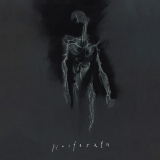Dmitri Kourliandskis Oper ‘Nosferatu’ macht auf den Hörer zunächst einmal den Eindruck einer musikalischen Umsetzung von Hieronymus Boschs Höllenvisionen. Dann erfährt er aus dem Booklet, dass es eine eigentliche Handlung nicht gibt. Die Oper ist ein Versuch, in den menschlichen Organismus einzutauchen, konkret in den Körper von Nosferatu, der sich vom Blut seiner Opfer ernährt. Die Musik blubbert vor sich hin, als Klangbild des vampirischen Kreislaufs.
Das Libretto besteht aus zusammenhanglosen meist mehr gehauchten als gesungenen Aufzählungen von anatomischen Begriffen, Zahlen, Rezepten von Giftmischungen. Es ist ein symbolisches Labyrinth in ununterbrochener Bewegung. Sinnbildlich verstehen Komponist und Librettist das als Tonwerdung von Verzweiflung. Musikalisch ist es eine verhuschte, zerfetzte Klangwelt, die sich dann doch als idealer Background beim Blättern durch ein Bosch-Buch erweist.
Die Energie und die Spannung, die Dirigent Teodor Currentzis und sein Ensemble erzeugen, sind phänomenal, genau so schillernd wie eben die Bilder des niederländischen Malers. Und der Komponist Dmitri Kourliandski bestätigt das so: « When blood circulates through our veins, being concealed from our eyes, it symbolizes life, but when we see blood spilled, it stands for death. Nosferatu needs to imbibe blood, in order to go beyond the ordinary and the commonplace, to be in contact with the unknown and the transcendental. In his quest for the unknowable, he is poised between life and death. (…) We are presented with a hallucinogenic landscape in which the lofty collides with the lowly, life with death, light with darkness, the past with the future, in the continuous movement toward the otherworldly. This collision engenders a supernatural present that teems with Erinyes, nightmares, life-giving and lethal visions. The labyrinth leads Nosferatu not to heaven but to the nucleus of the other world that conceals a new Hades or, perhaps, a new paradise. »
Dmitri Kourliandski’s opera Nosferatu is musical journey through the human organism, reflecting sounds produced inside the vampire’s body. It’s a strange combination of sounds and a perfect musical background for some pictures by Hieronymus Bosch.
























